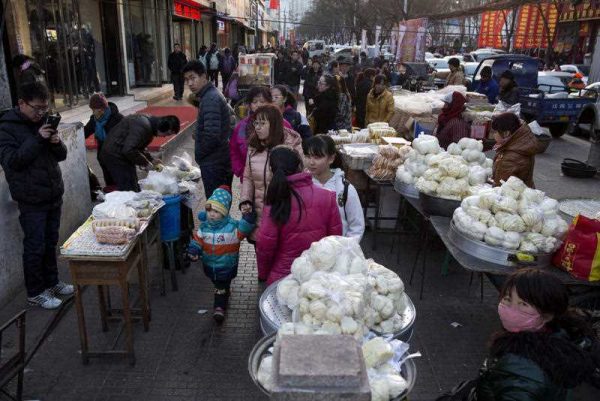Now, as the Chinese economy begins to slow down, prospects of further regional divergence are troubling and have a greater chance of exacerbating political tensions.
During the last six and half decades, Chinese society and its economy have undergone momentous changes. The scale and pace of change were truly unprecedented. One Chinese generation wore Mao suits, rode bicycles and never dreamed of ever travelling abroad (or if so, then only to North Korea or Albania). Their children wear business suits and drive cars. And their grandchildren live in a China whose average income is almost thirty times higher than what it was in 1980.
The process of economic decentralisation first began under Mao Zedong, who actively encouraged regional leaders to compete with each other in output (reported, if not actually produced). Deng Xiaoping’s efforts to reform and liberalise the economy continued this trend. At first, reforms were limited to only a handful of special economic zones such as Shenzhen. But when liberalisation was extended to the rest of the country, its progress was uneven: the coastal provinces charged ahead while the rest of the country followed at a slower pace.
But how did these momentous changes affect economic integration among Chinese provinces?
An instructive manifestation of economic integration is the degree of synchronisation of business cycles among provinces. In a closely integrated economy, most regions experience similar output shocks. As a result, business cycles would move in sync most of the time. That is important, as regions with closely synchronised business cycles would tend to agree on what kind of policy — either contraction or expansion — is required at any point in time. The recent political turmoil in the Eurozone demonstrates what happens when such synchronisation is lacking.
The output shocks can be further decomposed into supply shocks (which affect both output and price level permanently) and demand shocks (which have only a temporary effect on output but a permanent effect on the price level). Over the last 60 years, the correlations of output shocks have changed over time, but the two kinds of shocks have moved in opposite directions. Cross-province correlations between demand shocks suggest provinces have become more integrated over time. But supply shocks suggest provincial economies have been diverging.
Exposure to international trade and foreign investment played crucial roles in driving the growth of the Chinese economy in the past three decades. But the benefits from external economic ties were largely limited to provinces that are engaged in international trade or receive foreign investment. Hence, external engines of growth do not make demand or supply shocks spill over across provinces. Instead, it turns out that inter-provincial trade and factors of production were the main drivers of shock similarity.
China is thus still only a partially integrated economy. As supply shocks have permanent effects on output, their divergence could be a reason to worry. If they continue to diverge, even wider gaps may emerge between China’s regions. The limited role that external economic factors have in spreading shocks across China means that they may be contributing to regional asymmetries. Domestic factors — such as the hukou system of household registration — may have also contributed to supply shocks diverging.
History shows that countries stricken by growing economic disparities can develop important political tensions. For most countries, an overwhelming sense of national identity and high degree of mobility of people can help overcome such tensions. But although 95 per cent of the Chinese population are Han Chinese, they often speak different dialects and have a strong sense of belonging to their region, rather than the nation at large. The restrictions on migration neither foster a notion of national identity nor encourage the effects of shocks to spread across regions.
The Chinese economy is starting to slow down. The well-off southeast Chinese may have been happy to some of their taxes to be used to cross-subsidise the poorer regions in central and western China while their own regions were getting more prosperous over time. But only time will tell whether they feel the same when growth stops.
Jan Fidrmuc is Senior Lecturer at the Department of Economics and Finance, Brunel University, UK.
This is a brief summary of an article published by the author in conjunction with Shuo Huang and Jarko Fidrmuc in the China Economic Review.


There has also been a considerable amount of differentiation in Chinese history whether it be among the Han, between the Han and other ethnic groups, and geographical. In many important ways, this is natural.
What is a startling phenomenon at this period is the enormous linking together of the country through transportation infrastructure. This has both an integrative consequence as well as a tension exacerbation consequence as disparity becomes magnified.
But so long as most places are growing or staying content, this is not a time bomb. I would not underestimate the ability of the Chinese to do so.